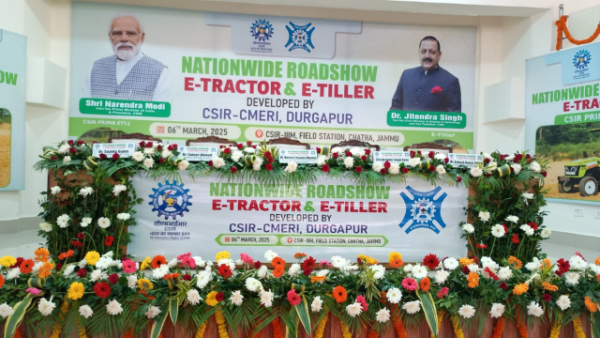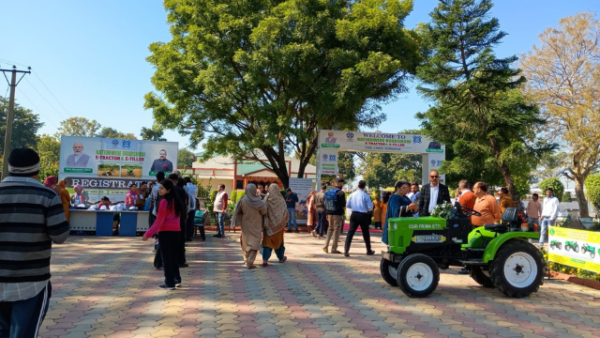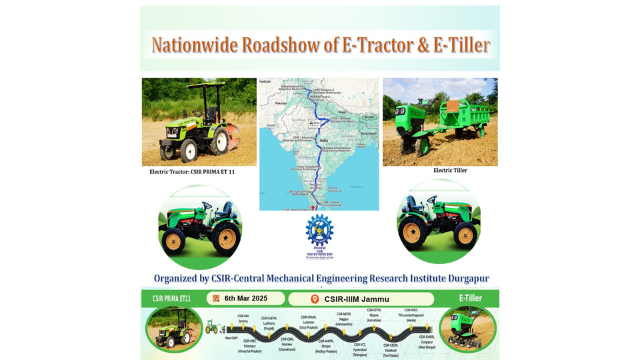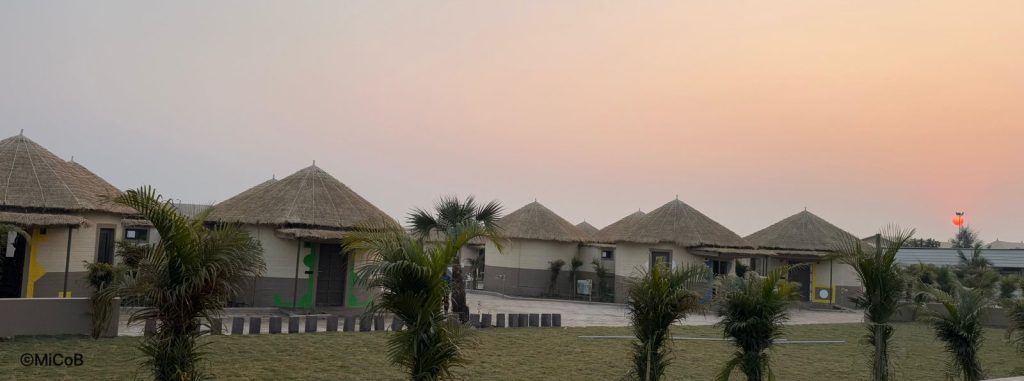In this article Bhusan Chettri explains how Artificial Intelligence (AI) can be used for monitoring soil and crop conditions with the aid of automatic systems driven by advanced AI algorithms for yielding better crop produce. He describes the steps involved in training such automatic systems and also elaborates on their potential merits and demerits.
“Agriculture is one of the most important sectors for the economy of our country, India. It is the foundation on which the economy of our country stands. The use of artificial intelligence technology in agriculture can increase productivity and efficiency. Artificial Intelligence is being used for identification and detection of diseases, precision farming and many other applications. Machine learning, a kind of artificial intelligence, allows computers to learn and make decisions on their own. In the field of agriculture, machine learning is being used to improve crop yields, reduce costs, and increase efficiency. ”, says Bhusan Chettri an AI researcher who is currently exploring applications of AI in agriculture and weather forecasting.

AI can be used for crop and soil monitoring through the use of sensors and machine learning algorithms. Sensors placed in the field can collect data on various parameters such as temperature, moisture levels, soil nutrient levels, and sunlight intensity. This data can then be fed into machine learning algorithms, which can analyze the data and provide insights on the optimal conditions for crop growth and soil health. From these data the learning algorithms also discover trends and patterns useful for understanding the soil conditions. For example, the algorithm can determine the optimal amount of water and nutrients required for the crops and provide recommendations on when and how to apply these inputs. It can also detect potential issues such as pests or diseases and provide early warning to farmers. Additionally, AI can be used to monitor the health of the soil itself, providing insights on its composition and potential issues such as soil erosion or compaction. This can help farmers take appropriate measures to improve soil health and maintain productivity. The AI system can also alert farmers when soil conditions are not optimal for plant growth and suggest potential solutions. Additionally, AI can be used to monitor crop health and predict potential pest infestations or disease outbreaks, allowing farmers to take preventative measures.

Bhusan Chettri explains that the use of AI technology for crop and soil monitoring is very helpful in getting a good deal of information about the health of crops and the quality of soil. The technology has been used to get the best results on time. With the use of the technology, farmers can easily get access to all the data regarding the condition of their crops and other agriculture activities. It helps in saving time and money. The technology offers accurate analysis on time and helps in reducing environmental damage by farmers.
There exists several free datasets that can be used to train AI (machine learning and deep learning models) for agricultural farming. For example, the Agricultural Research Service (ARS) of the United States Department of Agriculture (USDA) provides a dataset containing images of various crops and plant diseases, which can be used to train machine learning models for crop health monitoring and disease detection. The dataset is freely available and can be used to train machine learning models for crop health monitoring and disease detection. The dataset includes images of different crop species, such as corn, wheat, soybeans, and rice, as well as images of common plant diseases, such as rust, blight, and wilt. The images are labelled with the specific crop or disease, along with additional metadata such as the location and date of the image. The ARS dataset can be used to train deep learning models to recognize different crops and diseases in images, allowing farmers and researchers to monitor crop health and detect potential issues. This can help improve crop yields and reduce the spread of plant diseases. Additionally, the United Nations Food and Agriculture Organization (FAO) provides a dataset containing information on global food production and consumption, which can be used for predictive modelling and analysis of agricultural trends and challenges.
“Furthermore, understanding soil texture is very important towards ensuring healthy crop production. In this direction, it is also possible to train an automatic system for fast and accurate prediction of soil texture using Machine Learning and Artificial Intelligence algorithms.”, says Bhusan Chettri. Following steps need to be followed for this.
- Collect a large dataset of images of soil textures from a variety of locations and conditions. The dataset should include images of different soil textures, such as sandy, clayey, and loamy, as well as corresponding labels or annotations indicating the soil texture of each image.
- Use this dataset to train an AI (machine learning or deep neural network model) to recognize different soil textures in images. This would typically involve using a type of neural network called a convolutional neural network (CNN), which is well-suited to image recognition tasks.
- Validate the trained model using a separate dataset of images to ensure that it is accurate and reliable. This would involve comparing the model’s predictions to the true soil textures of the images in the validation dataset and measuring the model’s performance using metrics such as accuracy and precision.
- Implement the trained deep learning model in a computer vision system, which would be used to automatically capture and analyze images of soil textures in the field. The machine vision system would need to include hardware components such as cameras and sensors, as well as software components such as image processing algorithms and the trained deep learning model.
- Test and evaluate the automated monitoring system in the field to ensure that it is able to accurately and reliably predict soil textures in real-world conditions. This would involve collecting images of soil textures using the machine vision system and comparing the system’s predictions to the true soil textures.
Training an AI for automatic crop and soil monitoring
To train an AI (Machine Learning or Deep Neural Network model) for automatic crop and soil monitoring, you would need to gather a large dataset of images and other data related to crops and soils. This dataset would need to include a wide range of examples, such as images of different plant species, growth stages, and soil types, as well as corresponding labels or annotations that indicate the class or category of each example. One can also use the freely available related datasets that were discussed earlier. Once data collection is completed, training of a neural network model is performed by presenting it with the examples in the dataset and adjusting the strengths of the connections between the neurons in the network based on their performance. This process is known as backpropagation and is typically performed using specialized software and hardware tools. During training, the neural network model would learn to recognize patterns and relationships in the data, and it would be able to make predictions or classifications on new, unseen data. The accuracy of the model would be evaluated using a separate set of data that is not used for training, and the model would be refined and improved based on this evaluation. Overall, training a neural network for automatic crop and soil monitoring is a complex and time-consuming process that requires a large dataset and specialized tools and expertise. However, the results can be highly accurate and valuable for agricultural applications.
There are many examples of research efforts to train automatic systems for crop and soil monitoring. Here are a few examples. In one study, researchers trained a CNN to identify and classify different crops in satellite images. The CNN was trained using a dataset of over 100,000 images of crops, and it achieved an accuracy of over 90% on a validation dataset. The trained model was then used to automatically map the distribution of different crops in a study area. In another study, researchers used a combination of machine learning algorithms, including random forests and support vector machines, to predict soil moisture levels from remotely sensed data. The algorithms were trained using a dataset of soil moisture measurements and satellite imagery, and they were able to accurately predict soil moisture levels with an average error of less than 5%. In yet another study, researchers trained a deep learning neural network to classify different soil textures in images. The network was trained using a dataset of over 2,000 images of soil textures, and it achieved an accuracy of over 95% on a validation dataset. The trained model was then used to automatically identify and map soil textures in a study area. Overall, these studies demonstrate the potential of machine learning and deep learning algorithms for automating crop and soil monitoring tasks.
“Overall, developing an automated monitoring system for fast and accurate prediction of soil texture using an image-based deep learning network and machine vision system is a complex and challenging task that requires expertise in machine learning, computer vision, and soil science. However, the resulting system can provide valuable information for agricultural applications.”, says Bhusan Chettri, researcher in AI, Machine Learning and Data Science.


 Entertainment3 years ago
Entertainment3 years ago
 Education1 year ago
Education1 year ago
 Business2 years ago
Business2 years ago
 Technology1 year ago
Technology1 year ago












